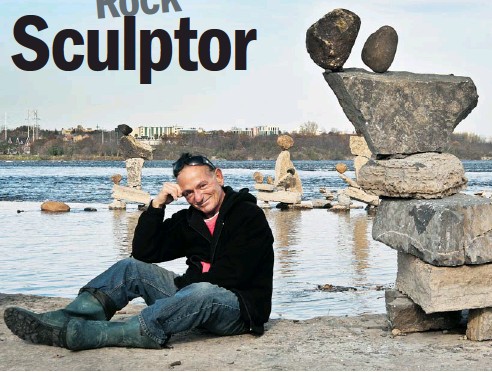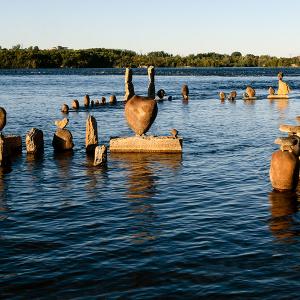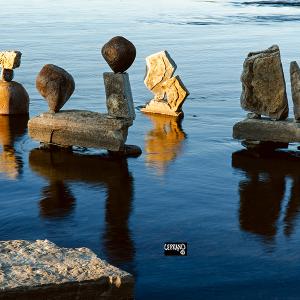Aa
Aa
Aa
Aa
Aa
Aa
Aa
Aa
Aa
Aa
Aa
Aa
Aa
Aa
Aa
Aa
Aa
Aa
Aa
Aa
Aa
Aa
Aa
Aa
Aa
Aa
Aa
Aa
Aa
Aa
Aa
Aa
Aa
Aa
Aa
Aa
Aa
Aa
Aa
Aa
Aa
Aa
Aa
Aa
Aa
Aa
Aa
Aa
Aa
Aa
Aa
Aa
Aa
Aa
Aa
Aa
Aa
Aa
Aa
Aa
Aa
Aa
Aa
Aa
Aa
Aa
Aa
Aa
Aa
Aa
Aa
Aa
Aa
Aa
Aa
Aa
Aa
Aa
Aa
Aa
Aa
Aa
Aa
Aa
Aa
Aa
Aa
Aa
Aa
Aa
Aa
Aa
Aa
Aa
Aa
Aa
Aa
Aa
Aa
Aa
AaJohn Felice Ceprano went down to the Ottawa River one day in 1986 and balanced one rock on top of another. Twenty-five years later, his sculptures have been seen by people all ove
 BRUCE DEACHMAN, THE OTTAWA CITIZENAn expatriate from Rhode Island — the Ocean State — John Ceprano’s longing for water led him to Remic Rapids on the Ottawa River, where he began a rock sculpture installation that has continued for 25 years.
BRUCE DEACHMAN, THE OTTAWA CITIZENAn expatriate from Rhode Island — the Ocean State — John Ceprano’s longing for water led him to Remic Rapids on the Ottawa River, where he began a rock sculpture installation that has continued for 25 years.
Rock sculptor John Felice Ceprano is truly one in a million
On a July weekend in 1998, artist John Felice Ceprano arrived at Remic Rapids on the Ottawa River and discovered that someone had defaced the rock sculptures he’d been creating there for a dozen years, splattering them with yellow house paint.
Heartbroken that someone would mar the rocks in such a manner, Ceprano went to Canadian Tire and bought all the metal brushes they had. When he returned to the river, he found handfuls of strangers offering to help him scrub the rocks clean.
“These weren’t friends of mine,” he says. “These were people who identified with what I was doing. They said ‘ Can I help?’ They wanted to help, they wanted to clean up. They knew that what took place was not necessarily an affront to me; it was an affront to everyone.
“They felt just as compelled to clean up the mess as I did, and by the end of the day we cleaned up the entire place.”
This year marks the 25th anniversary of Ceprano’s ever-changing but always familiar public art installation: a congregation of carefully balanced rocks that over the years has served equally well as a spot for quiet contemplation and inspiration, a stage for boisterous performances of drummers, firedancers and stiltwalkers, and a tourist attraction for curious shutterbugs. Additionally, inclined passersby are free to try their hands at the fine art of balance.
“Public art is not something for decoration,” says the 64-year-old Ceprano, “and I really get very fussy about this with other artists. If it’s decoration I’m not really interested, because I can buy wallpaper or go out and get something from Home Depot. I can get decoration anytime.
“I want something that inspires me, something that moves me. I want something that generates a connection between me and the work.”
His work on the river arose out of a disconnection he felt in 1986, thirteen years after moving to Ottawa on a whim from his home in Providence, Rhode Island, the Ocean State.
(“I came up during the middle of the Tulip Festival, not realizing this thing was going on” he recalls. “I thought I had died and gone to heaven.”)
“I’d reached a point where I was saying ‘I really miss the sea. I miss the ocean. I really miss the water,’” he recalls. “‘I love living here. It’s a gorgeous country, gorgeous space, gorgeous landscape, but I need water!’ “‘But hey, there’s this great big river. Go find a nice spot where you can relax and meditate, do some drawing and photography.’ ”
The site he found looked different then: it was totally secluded from the Western Parkway and bicycle path by thickets of trees and bushes. “I could immediately see the energy and beauty and power of the place,” he remembers, “and that was enough for me.”
He spent his first day there simply listening to the water and, as he puts it, calming his soul. On subsequent visits, he noticed rocks appearing as the water level dropped. “One thing very innocently led to another, and I ended up creating something without any intention.” He stresses the point that these are not Inukshuks, nor inspired by the Inuit rock sculptures of people.
He estimates his work at the rapids consumes nine hours a day of his time, five months of the year. He also does private commissions, and works two days a week at the Elisabeth Bruyère hospital as a registered practical nurse. For despite a working arrangement with the NCC that gives him access to the site and also provides him an annual stipend, balancing rocks does little to balance the chequebook.
It’s also extremely demanding physical work. He’s hurt his back numerous times, and lost a fingertip on his right hand when he allowed himself to be distracted while moving rocks. Ask him to pose for a photo, and he refuses to do so where a boulder might fall on him.
He’s also seen much from his spot on the Ottawa: lovers stealing kisses or ex- changing wedding rings, loved ones spreading ashes, youthful hijinx and illegal smiles, and even, in 1994, a tornado that tore across the river. About 1,000 people pass by each day, he says, while on fair-weather Sundays, as part of his arrangement with the NCC, entertainers often perform there, attracting crowds as large as a couple hundred.
“This has become a really tremendous meeting place for people,” he says.
“The work has been viewed by people from every single country on this planet.
“It’s not about just what I do here,” he adds. “It’s about what we have as a community. The purpose of the work is to provide the space to create the community for people to come together, and to get over our differences and not be divisive.”
To that end, he feels his return each spring to re-build his installation, to work in and with nature, to meet and talk with visitors to the site, is no longer a matter of choice for him, but an obligation.
“This is the longest relationship I’ve ever had. I get to meet people from all over the world who share a similar perception of life. I couldn’t get that any other way.”
Not yet rated







